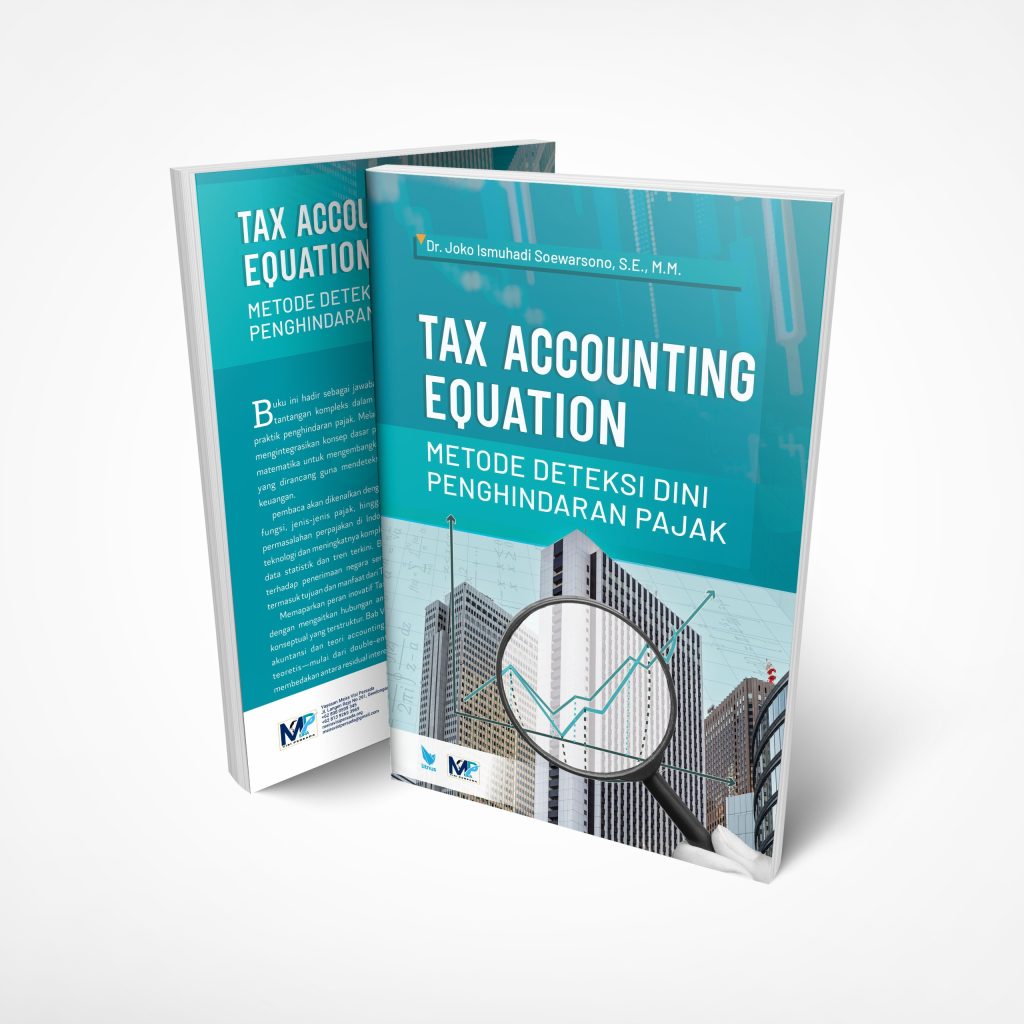
Parallel Implementation of Tax Incentives for Non-Cash Payments and Ad Valorem Stamp Duties: An International Analysis
- Ekonomi
Wednesday, 09 April 2025 23:29 WIB

Jakarta, fiskusnews.com:
The fiscal landscape of modern economies is shaped by a multitude of policy instruments designed to achieve diverse objectives, ranging from revenue generation to influencing economic behavior. Among these tools are tax incentives for non-cash payments and ad valorem stamp duties. Tax incentives for non-cash payments are defined as governmental measures aimed at encouraging the adoption and use of electronic or digital payment methods over traditional cash transactions. These incentives can take various forms, such as tax deductions for consumers or reduced tax obligations for merchants accepting digital payments. Conversely, ad valorem stamp duties are taxes levied as a percentage of the value of a specific transaction, asset transfer, or legal document. These duties are commonly applied to transactions involving property, financial instruments, and legal agreements, primarily serving as a mechanism for revenue generation for governmental bodies.
While each of these policy approaches serves a distinct primary purpose, the question arises as to how they can function in parallel within a national fiscal framework and what the potential consequences of their simultaneous implementation might be. Non-cash payment incentives are often introduced to enhance economic efficiency, improve transaction transparency, reduce the prevalence of the shadow economy, and potentially decrease the operational costs associated with managing cash. Ad valorem stamp duties, on the other hand, are primarily employed as a means of generating revenue, often tied to specific high-value transactions or asset transfers. The interplay between these two seemingly disparate policy tools warrants a detailed examination to understand their potential synergies and trade-offs. The level of a country’s economic development and the maturity of its existing payment infrastructure are likely to be significant factors influencing the effectiveness and the nature of the interaction between these policies. For instance, in economies where digital payment adoption is low, incentives might be critical in driving initial uptake. Conversely, the imposition of ad valorem stamp duties might encounter greater resistance in such contexts if they disproportionately affect a large segment of the population still reliant on formal, yet potentially cash-adjacent, transactions. This report aims to analyze the parallel implementation of these policies through an examination of international practices and scholarly discussions, thereby providing insights for effective policy design.
To understand the practical application of these parallel policies, it is crucial to identify countries or regions that have implemented both tax incentives for non-cash payments and ad valorem stamp duties. Based on the available research, several countries emerge as potential case studies. Indonesia, South Korea, the United Kingdom, and India are identified as jurisdictions where evidence suggests the presence of both policy types. Snippets indicate that these countries have various forms of tax credits and incentives in place, which could potentially include those related to non-cash payments. Furthermore, these nations also levy stamp duties on a range of transactions and instruments. For example, in Indonesia, various tax incentives for businesses and investors are discussed, alongside the implementation of stamp duties on legal documents and electronic transactions. Similarly, South Korea has implemented tax incentives for electronically traceable payments and also has a Stamp Tax Act in place. The United Kingdom levies stamp duty, particularly on share transactions and property transfers, and has explored and implemented various measures related to digital payments. India, too, offers incentives for digital payments and imposes stamp duties on various legal and financial transactions. Other countries such as Barbados, Belgium, Cambodia, Canada, Libya, Lithuania, and the United States are also mentioned as having tax credits and incentives , but further research is required to ascertain the specific presence and structure of both non-cash payment incentives and ad valorem stamp duties in these regions.
To further analyze the parallel implementation, it is essential to examine how these policies are structured in the identified regions, specifically looking at the rates of incentives/cuts and the scope and rates of the stamp duties.
In Indonesia, the government offers a range of income tax incentives to encourage investment and economic growth. These include tax holidays, providing exemptions from Corporate Income Tax (CIT) for a period, and tax allowances, allowing deductions on investments in tangible fixed assets. There is also a Foreign Tax Credit mechanism to minimize double taxation. Special Economic Zones and Bonded Zones offer reduced CIT rates and exemptions from other taxes like VAT and import duties. For the property sector, VAT exemptions have been implemented for certain transactions. Regarding non-cash payments specifically, while the provided snippets don’t detail explicit incentives, the broader push for digitalization and electronic transaction systems by the Ministry of Home Affairs suggests an environment conducive to such incentives. On the other hand, Indonesia levies stamp duty at a standard rate of 10,000 rupiah (approximately US$0.64) on various legal documents, including agreements, certificates, notarial deeds, and securities. Electronic stamp duty is also mandated for electronic transaction documents exceeding a certain value. The scope of stamp duty covers documents of a civil nature and those intended for use as evidence in court.
South Korea implemented the Tax Incentives for Electronically Traceable Payments (TIETP) in 1999. This scheme allowed wage and salary earners to claim tax deductions for eligible purchases made using credit cards, debit cards, and electronic cash receipts. This initiative significantly contributed to the country’s shift towards a cashless economy. The Stamp Tax Act in South Korea imposes taxes on documents that certify the creation, transfer, or alteration of rights related to assets or transactions. The Act specifies various taxable documents and corresponding tax amounts, with provisions for both paper and electronic documents. Exemptions are also outlined for certain types of documents, such as those prepared by the state or for charitable purposes.
In the United Kingdom, while the research does not explicitly detail tax incentives specifically for non-cash payments, the government has shown a commitment to supporting digital payments and has undertaken initiatives to promote their adoption. For instance, the “Making Tax Digital” initiative encourages the use of digital record-keeping and reporting. The UK levies Stamp Duty Land Tax (SDLT) on property purchases and Stamp Duty Reserve Tax (SDRT) on the transfer of shares. The rate of SDRT on electronic share purchases is 0.5%. SDLT rates on property vary based on the property value and the buyer’s status.
India has actively promoted digital payments through various incentive schemes, particularly for RuPay debit cards and low-value BHIM UPI transactions. The government has allocated significant financial outlays to incentivize banks and payment service providers for promoting these digital payment methods. India also has a stamp duty regime, with stamp duty being a tax levied on legal documents related to property transactions, agreements, and contracts, regulated by state revenue departments. The payment of stamp duty has also been increasingly digitized. Additionally, Section 80C of the Income Tax Act allows for deductions on stamp duty and registration charges paid on the purchase of house property under the old tax regime.
The impact of these combined policies on the formalization of the economy and tax revenue varies across regions and is a subject of ongoing discussion and research. In South Korea, the TIETP scheme is credited with significantly contributing to the formalization of the economy by increasing the transparency of transactions and curbing tax evasion. Studies estimate that the scheme led to a substantial increase in personal income tax revenue. The high adoption of card payments in South Korea, ranking among the highest globally, is often attributed to this incentive.
In India, empirical evidence suggests a positive and highly significant relationship between the growth of digital payments and the increase in Goods and Services Tax (GST) revenue. The increased traceability of transactions through digital payments is believed to contribute to improved tax compliance and revenue collection. The “Digital India” program has played a key role in promoting digital transactions and formalizing the economy.
While the research does not provide specific studies on the combined impact of non-cash payment incentives and stamp duties on economic formalization and tax revenue in Indonesia and the UK, the individual impacts are noted. In Indonesia, the move towards digital payment systems is seen as a way to boost revenue management and improve the efficiency of government transactions. In the UK, stamp duty on property and shares generates significant revenue for the treasury.
The simultaneous application of tax incentives for non-cash payments and ad valorem stamp duties can potentially lead to instances or discussions of double taxation. For example, if a transaction that is encouraged through non-cash payment incentives is also subject to a stamp duty, the economic agent might perceive this as a double burden. Consider the case of securities transactions in Indonesia. The imposition of a stamp duty of IDR10,000 on trade confirmations has been met with mixed reactions, with some investors feeling that this, combined with other taxes and levies, could reduce their net income from capital market investments. This could be viewed as a form of double taxation or at least a policy inconsistency where one arm of the government encourages transactions while another taxes them, potentially dampening the intended positive effects of the incentives.
In the UK, concerns have been raised about the stamp duty on share purchases, with arguments that it makes equity capital more expensive and could be seen as a disincentive to invest, especially when investors might also be subject to capital gains tax on any profits made from those shares. The stamp duty on shares is also highlighted as a potential cause of double taxation for investment companies, as they pay stamp duty when purchasing shares, and investors in these companies might also pay stamp duty when buying shares in the investment company.
The impact of ad valorem stamp duties on small businesses and consumers varies depending on the economic context and the specific design of the stamp duty. In India, research indicates that stamp duties on immovable property transfers are exceptionally high compared to international rates. These high rates impose significant compliance costs on taxpayers, are subject to evasion and fraud, and can distort real estate markets by reducing their responsiveness. This can disproportionately affect small businesses and consumers involved in property transactions.
In Indonesia, the new stamp duty tariff of IDR10,000 on trade confirmations has been criticized by some investors who argue that it is higher than other transaction costs and could negatively impact their potential net income. This suggests a potential burden on small investors and businesses participating in the capital market.
In the UK, stamp duty on property is considered a significant factor affecting the housing market, potentially hindering mobility and making it harder for young families to purchase properties. The increase in stamp duty surcharges for second homes and overseas buyers is also likely to impact property investors. For share transactions, the 0.5% stamp duty is seen by some as making the UK market less competitive compared to other international markets that do not have such a tax.
Implementing and managing both tax incentives for non-cash payments and ad valorem stamp duties concurrently can present administrative challenges and complexities. For non-cash payment incentives, a key challenge lies in ensuring that the incentives are effectively targeted and that the benefits outweigh the costs of implementation and potential revenue loss. The success of such incentives often hinges on addressing both the consumer and merchant sides of the market, requiring coordinated efforts to expand the necessary infrastructure, such as POS terminals, and to promote adoption. Furthermore, the integration of digital payment data with tax administration systems is crucial for monitoring the impact of these incentives on tax compliance and revenue.
For ad valorem stamp duties, particularly in the context of digital transactions, administrative complexities can arise in ensuring proper valuation of the underlying assets or transactions and in enforcing compliance. The introduction of electronic stamp duty, as seen in Indonesia, requires the development of robust digital infrastructure and secure systems for collection and verification. Managing exemptions and concessions related to stamp duties also adds to the administrative burden.
The concurrent management of both types of policies requires careful coordination between different government agencies and the development of integrated systems to avoid overlaps, inconsistencies, and unintended consequences such as double taxation or excessive administrative costs.
Public and political reactions to the introduction or changes in stamp duties and non-cash payment incentives can be significant and often reflect concerns about fairness, economic impact, and administrative burden. In the UK, changes to stamp duty land tax thresholds have historically led to fluctuations in the housing market and have generated considerable public and political debate, particularly regarding their impact on first-time buyers and market activity. Proposals to increase stamp duty on overseas buyers have also sparked discussions about their effectiveness in addressing housing crises and their potential impact on investment.
In Indonesia, the imposition of stamp duty on securities transactions has elicited negative reactions from some investors who view it as an added cost that reduces their returns. The government’s introduction of imprinted stamp duty through a new regulation also indicates ongoing adjustments and responses to administrative and public feedback.
In India, while digital payment incentives have generally been welcomed as a move towards a more efficient and transparent economy, concerns have been raised by payment service providers about the adequacy of the incentives to sustain the digital payment ecosystem. The rapid growth of digital payments in India is largely attributed to government initiatives and public adoption, but the sustainability of this growth requires continued support and appropriate policy frameworks.
Synthesizing the findings from the international analysis reveals several potential synergies and trade-offs in implementing tax incentives for non-cash payments and ad valorem stamp duties in parallel.
Potential Synergies:
- Increased Transaction Formalization: Non-cash payment incentives can encourage the use of digital payment methods, leading to greater formalization of transactions, including those that might otherwise occur in the informal sector. This increased formalization can broaden the tax base for various taxes, including stamp duties that apply to formally recorded transactions.
- Enhanced Data for Tax Administration: The shift towards non-cash payments generates valuable data on transaction volumes and values, which can be leveraged by tax authorities to improve tax compliance and potentially enhance the efficiency of stamp duty collection and enforcement.
- Reduced Costs of Cash Handling: By incentivizing non-cash payments, governments can potentially reduce the costs associated with printing, distributing, and managing physical currency. These savings can partially offset any revenue forgone through the payment incentives and can free up resources for other fiscal priorities.
Potential Trade-offs:
- Risk of Double Taxation: As highlighted in the Indonesian and UK examples, the imposition of stamp duties on transactions that are also being incentivized for non-cash payment could be perceived as a double burden, potentially undermining the effectiveness of the incentives and generating negative public reactions.
- Impact on Transaction Volumes: Ad valorem stamp duties, by increasing the cost of certain transactions, particularly high-value ones like property and share transfers, can potentially reduce the volume of these transactions. This could offset any increase in transaction volume resulting from non-cash payment incentives, especially if the stamp duties are set at high rates.
- Regressive Effects: Stamp duties, particularly on essential transactions like property purchases, can have regressive effects, disproportionately impacting lower-income individuals and small businesses. This could conflict with the broader goals of promoting financial inclusion and economic activity through non-cash payment incentives.
- Administrative Complexity and Costs: Managing two distinct sets of tax policies concurrently can increase administrative complexity and costs for both the government and taxpayers. Ensuring coherence and avoiding unintended overlaps requires careful policy design and coordination.
Conclusion:
The parallel implementation of tax incentives for non-cash payments and ad valorem stamp duties presents a complex interplay of potential synergies and trade-offs. While non-cash payment incentives can contribute to economic formalization and provide valuable data for tax administration, which could indirectly benefit stamp duty revenue in the long run, the imposition of stamp duties can also create disincentives for certain transactions and potentially lead to perceptions of double taxation. The optimal approach requires careful consideration of the specific economic context, the design of both policy instruments, and the level of coordination between them. Policymakers should strive to ensure that these policies are mutually reinforcing rather than contradictory, taking into account the potential impact on different segments of the economy, including small businesses and consumers. Further research and analysis are needed to fully understand the nuanced effects of these combined policies in various economic contexts and to develop best practices for their effective and equitable implementation.
Reporter: Marshanda Gita – Pertapsi Muda
Kontributor: Moch. Faisol – Semanggi Forever
Share
Berita Lainnya
Persamaan Akuntansi Pajak Dr. Joko Ismuhadi Soewarsono: Alat Forensik untuk Indonesia
Center of Excellence: SCCR Indonesia University
Selamat jalan, Bapa Suci
Analysis of the STEM CEL Module for Indonesia’s Tax Administration
Pajak dan Bea Cukai Pisah dari Kemenkeu, Jadi Badan Penerimaan Negara, Apa Dampaknya?
KOMISI (Kelas Online akadeMISI) Seri Pemeriksaan Pajak Episode 5 bertajuk Pemeriksaan Bukti Permulaan & Penyidikan Pajak
Rekomendasi untuk Anda

Berita Terbaru
Eksplor lebih dalam berita dan program khas fiskusnews.com
Tag Terpopuler
# #TAE
# #TAX ACCOUNTING EQUATION
# #TAX FRAUD
# #TAX EVASION















